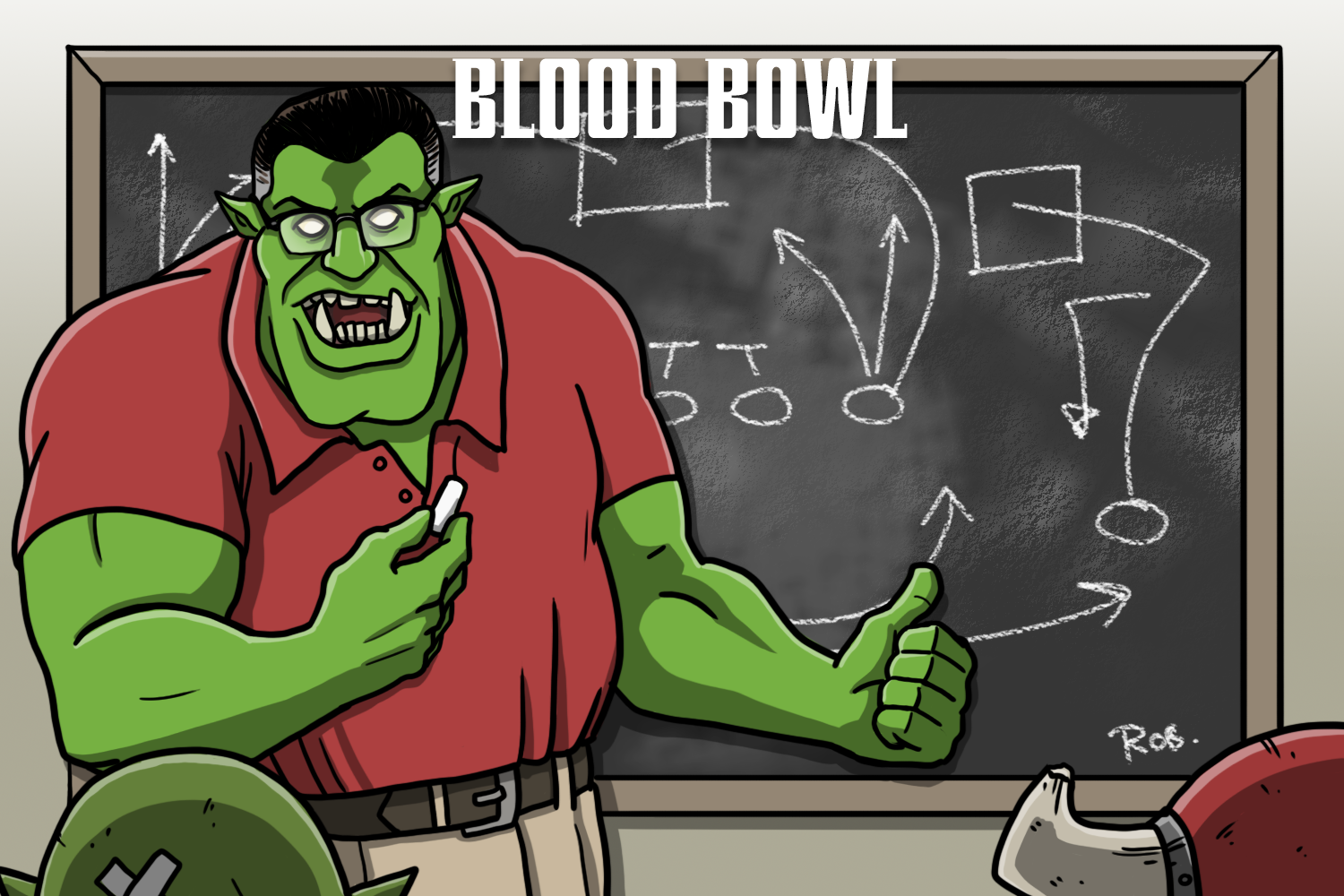In Lore Explainer, we take a deep look at the lore behind our favorite games, movies, and books, and talk about the story behind them and sum up what you need to know and how you can find out more.
If you’re a regular Goonhammer reader you’ll no doubt have seen one of our multitude of Blood Bowl articles in the past. You might even be aware that Blood Bowl is a sports game based in something that might very well be the Warhammer world. But with its mixture of strange lingo and not-quite-Warhammer goings on, perhaps it all seems a bit befuddling and downright weird. Well I’m here to give you the lowdown on the world of Blood Bowl and clarify exactly what on this other-earth is going on.
The World Of Blood Bowl
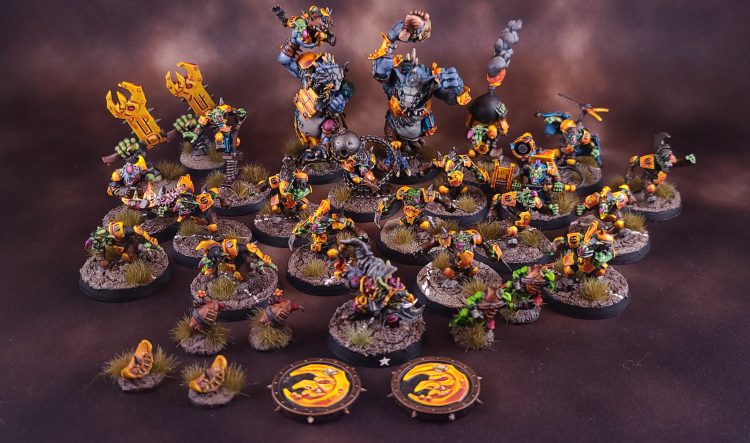
Blood Bowl is set in a version of the Warhammer World that is in many ways identical to the one that used to be the main setting of the Warhammer Fantasy Battle and Roleplay games. It has all the countries and continents you know and love, like the Isle of Ulthuan, Khemri, Lustria, etc. And those places have all the famous cities that are so familiar in Warhammer Lore; the likes of Altdorf, Naggarond, Karak-Eight-Peaks, etc.
What is most notably different is that rather than the neverending hell of war that besets the traditional Warhammer World, the battles of the universe of Blood Bowl are mostly confined to the sporting arenas. The game of Blood Bowl itself was rediscovered during a huge battle between many races long ago, and after the sacred texts of Nuffle (the God of Blood Bowl) were revealed, the peoples of the Blood Bowl universe decided it was much more sensible to settle their differences on the field of play.
Philosophically, the grim darkness of Warhammer is replaced with a not-at-all dark humour. The peoples of the Blood Bowl world have a phlegmatic approach to life (and the loss of it) and tend to enjoy the cartoonish spectacle of it all. When players are decapitated by chainsaws, blasted by lightning, get eaten by their own team-mates, or simply trip over their own shoelaces and break their necks, the fans respond not with horror, but with howls of laughter and wild cheering.
Blood Bowl has its own calendar, nominally the Imperial Calendar, that once mirrored the year of our own world. On its initial release in 1987, Blood Bowl was set in the period 2487-88, with its recorded organised history stretching back to the early 2400’s, and the NAF becoming a unified body in the 2460’s, much like that of the post-merger NFL. With the launch of the new editions of the game, the calendar has moved on to 2500, which is now Blood Bowl’s current year.
Competitions and Tournaments

The Blood Bowl rulebook provides a verbose explanation of the history of competitive Blood Bowl, but by way of a brief summary:
Competitive Blood Bowl was once organised into a huge league with sub-divisions much like the NFL, called the NAF (this was a pun on the NFL and the english expression ‘naff’, meaning ‘rubbish/crap/useless’) who all competed for the Blood Bowl itself. In Lore terms the NAF suffered a financial scandal and went bankrupt, and Blood Bowl entered the Open Era, where many teams no longer played in fixed leagues or owned their own stadiums, but went travelling around the world, participating in all kinds of different tournaments hosted by various sponsors.
The big tournaments now still include the Blood Bowl itself, now known as the Blood Bowl Classic, but also the Chaos Cup, the Spike Magazine trophy, and the Dungeonbowl. These four ‘Majors’ are supplemented by a plethora of regional competitions in all parts of the world, such as the Lustrian Superleague and the Halfling Thimble Cup.
Teams and Owners

Blood Bowl teams are mostly formed along geographical, and by consequence, racial lines. Nevertheless many teams feature the full racial diversity of their denizens, so a Lizardmen team has a mixture of Sauruses, Skinks, and even a Kroxigor; an Orc team will also feature a Troll and Goblins, etc. Truly mixed teams are a rare sight, with the most notable examples being in the Dungeonbowl, where the esoteric philosophies of the Colleges of Magic can see their teams feature such strange bedfellows as Wood Elves, Snotlings, and the followers of Nurgle all on the same side!
The majority of Blood Bowl teams thus tend to epitomise the qualities and characteristics of their race. The Dark Elves of Naggarond see their home team the Naggaroth Nightmares take to the field in the kind of wickedly spiked, yet elegant armour, that befits the Druchii mentality. Their team’s ranks include not only the finest ball players, but also blood-thirsty Witch Elves and knife-wielding Assassins.
On the other hand, if you take in a Greenfield Grasshuggers game in the Moot you’ll find their often rotund, but certainly more jolly players, sporting a selection of ill-fitting kit and makeshift armour fashioned from cooking equipment, that reflects their somewhat different philosophy.
It takes a wealthy or powerful backer to form a professional Blood Bowl team, so most owners come from the ranks of royalty, such as Prince Derren ar-Lolovia, owner of the Darkside Cowboys; the merchant classes, like JJ Griswell of the Reikland Reavers; tribal chieftains, such as the Gouged Eye’s Gobsuck Skullcrush; Chaos Lords, such as the Doom Lords’ Overfiend Of the Lead Citadel; and powerful sorcerers, like the Necromancer Tomolandry the Undying.
Many teams have failed and gone bankrupt over the years thanks to the kind of dramatic events that frequently occur on and off the Blood Bowl field, so much like the sports franchises of our world, changing ownership and team identities is also a fact of life in the world of Blood Bowl. One recent example was the Middenheim Marauders, a Human team who had been Blood Bowl Champions in 2465. Brought to financial ruin following the collapse of the NAF, the Marauders were forced to merge with a local minor league team, and became the Middenheim Maulers, re-forming as an Old World Alliance team with a mixture of Human, Dwarf, Ogre and Halfling players.
Star Players
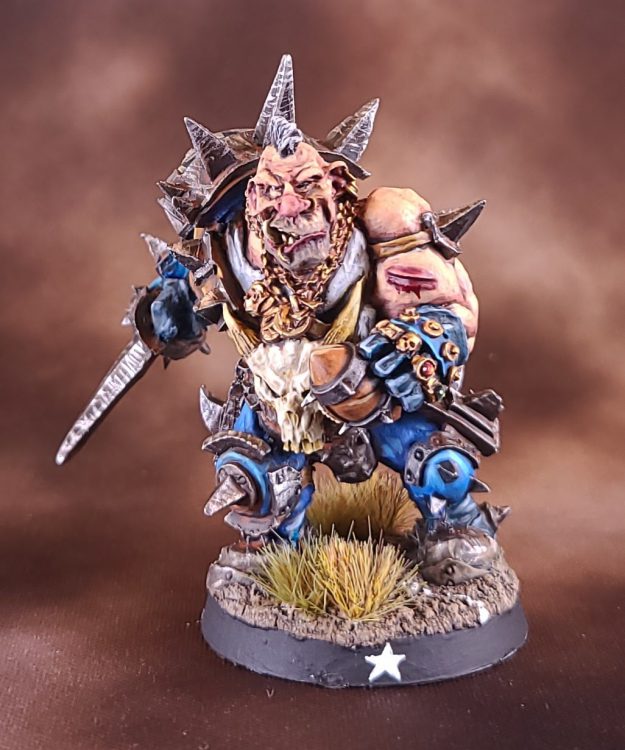
Like every other sport, Blood Bowl has its stars, but in Blood Bowl many of the biggest names are no longer attached permanently to particular teams. In the Open Era, many of the most famous and in-demand players ply their trade as freebooters, hiring out to teams for individual tournaments or matches.
Big names like the legendary Morg ‘n’ Thorg, once of the Chaos All-Stars, Ramtut the third, once of the Champions of Death, and even Griff Oberwald, the very face of the Reikland Reavers, now command incredible sums of money by hiring out to teams all over the world. These players have accrued such wealth that the dangers of the pitch are now a trivial consequence, with a team of sorcerous staff behind them that can heal their injuries, or even resurrect them if something goes seriously awry on the field.
Not every star is cut from such exalted cloth, and the mercenary market has room for players of all shapes, sizes, and price points. A number of truly exotic creatures ply their trade as freebooters who would otherwise never be seen on the Blood Bowl field, including Chaos Spawn, Zoats, and murderous Squirrels?!
Stadiums And Surfaces

Blood Bowl is traditionally played on grass fields, much like those of American Football or Soccer. And the sports stadiums that house them are also very much like those that you might see in our own world.
Of course, with such a wide variety of races and places hosting the sport, variations on the norm are widespread and dramatic. You could be at the home of the Dwarf Warhammerers in Khulgar, playing on polished obsidian; in Norsca, playing on hardened pack-ice; in the Goblin swamps of Ubrovnia, playing on some poorly-tied together rafts above alligator-infested waters; or in the Chaos All-Stars stadium, playing on…well, just about anything!
One of the more controversial innovations in the world of playing surfaces was Astrogranite. This is an artificial surface (made from, well, no one is quite sure) that can be laid easily anywhere in the world of Blood Bowl. It was a big hit with teams at the peak of the NAF’s popularity, due to its ease of maintenance and ability to be laid in inhospitable environments. The fact that it caused far more injuries and unusual bounces meant that many teams swore never to touch it, and even tried to have it banned, but Astrogranite remains a popular surface in Blood Bowl today.
Blood Bowl fans are famously excitable and bloodthirsty, and many a player has met a sticky end after being pushed off of the pitch and into the stands. Of course sometimes things go the other way – the Craggen Counts Vampire team was banned from the NAF after they developed the habit of helping themselves to a half-time ‘snack’ from the crowd.
If the action on the pitch isn’t exciting enough, the fans find way to amuse themselves. The most famous example of this is ‘The Chuck’, where the largest fans in the stadium hurl the smallest into the air. Catching them afterward is optional.
Cheating and Referees
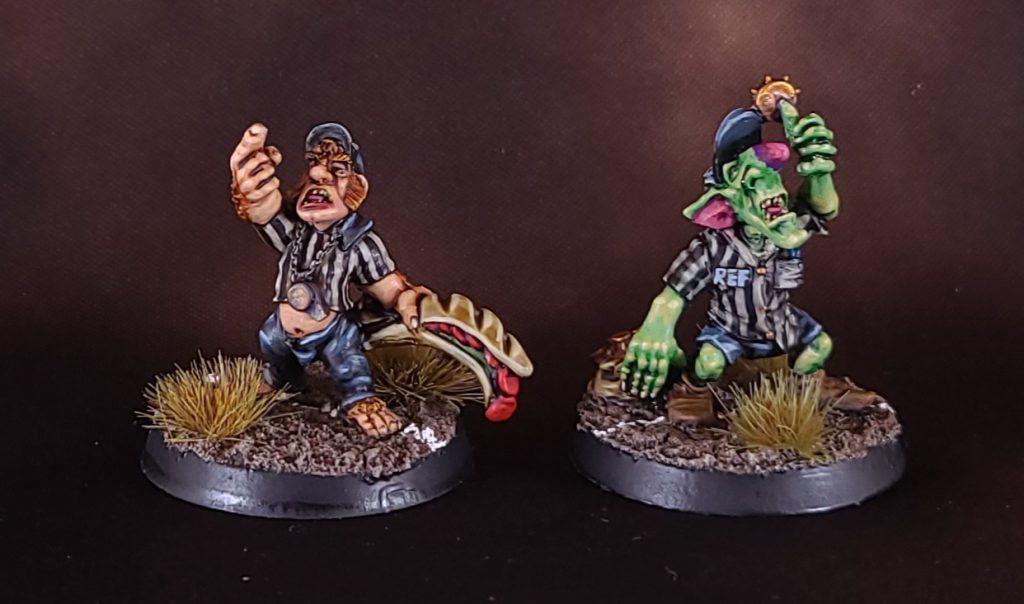
In most sports, cheating is considered one of the lowest acts, and players and teams can be censured and banned from competitions if caught. While this is nominally true in Blood Bowl, the reality is that virtually every game, no matter who is playing, is riddled with law-breaking, ranging from the relatively discreet, such as a sneaky kick on a downed opponent, to the absolutely flagrant, like driving a piece of dangerous agricultural machinery onto the field and running over the opposition with it.
The rules of Blood Bowl, derived from the original sacred texts of Nuffle, have had to be updated many times to reflect the more creative innovations of Blood Bowl teams who continuously try to find ways of bringing military-grade ordnance onto the field. Nevertheless, knives, bombs, chainsaws, and even larger and more egregious violations of anything resembling sporting play all find their way onto the field for at least a brief time in most games of Blood Bowl before the referees intervene.
As you might imagine, Refereeing a game like Blood Bowl, where the majority of players are homicidal maniacs, and the fans are arguably worse, is a dangerous and unforgiving occupation. Many players have made a habit of sending referees to their graves, and at one point there was some heavy competition in this stat. Some referees have pushed back the other way, most famously Max ‘Kneecap’ Mittlemann, who dealt with players who argued his calls using tools ranging from a pair of pliers, to a branding iron, and even a chainsaw. Though Max was suspended for breaking the very laws he was supposed to be upholding, he was eventually reinstated following an outcry from the fans.
It is no surprise though, that given the choice between easy coin and a swift and painful death, bribery of officials is absolutely rife. In fact at one point it was getting so out of control that the Referees Guild established a body to ensure standard and fair pricing amongst its members.
Broadcasting and Sponsorship

One of the key developments in the accessibility and popularity of the sport was the creation of Cabalvision. This magical technology allows games to be broadcast, via the perspective of a bound spirit directed toward the pitch, whose gaze is then transmitted and can be viewed remotely through magic mirrors and crystal balls.
The magical networks on which you can watch Blood Bowl include the NBC (Necromancers’ Broadcasting Circle) and the ABC (Association of Broadcasting Conjurers). Cabalvision has become huge business in the world of Blood Bowl, to the extent that at the height of its fame, ABC paid a staggering 12 million Gold Crowns for the NAF broadcasting rights.
The most popular and well-known faces in the world of Blood Bowl broadcasting are Jim (Johnson, a Vampire) and Bob (Gifford, an Ogre), who have provided commentary and colour to Cabalvision since its earliest days.
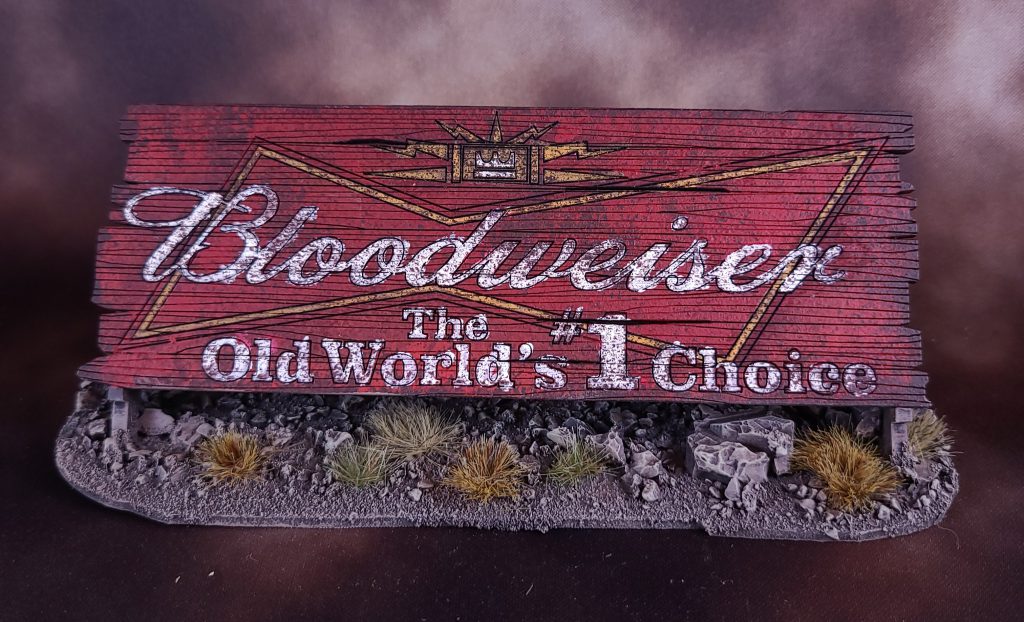
Blood Bowl has a host of corporate entities who support and supply the game. Kit manufacturers include such strangely familiar names as Orcidas and Reebork, while food and drink comes from the likes of Bloodweiser and the Halfling-owned McMurty’s, maker of the Big Moot burger.
Many teams have direct sponsorship deals. The Temple of Morr have long sponsored the Champions of Death, while some of the most famous Dwarven teams have gained the patronage of the Architects and Metalworkers Guilds. Not all sponsorships are so grand: The Greenfield Grasshuggers are proudly sponsored by Tumbledown Dick’s Coaching Inn.
Wrap Up
Does this sound like the kind of world you’d like to read more about? Why not check out the lore of the worst Blood Bowl teams. Want to pay the game? We have articles for getting started, moving from beginner to intermediate, and loads of tactics guides for teams and universal skills alike!
We hope this article helped you to gain an insight into the wonderful and weird world of Blood Bowl. If you have any comments, questions, feedback, or ideas for our Blood Bowl coverage, you can drop us a line at contact@goonhammer.com.
